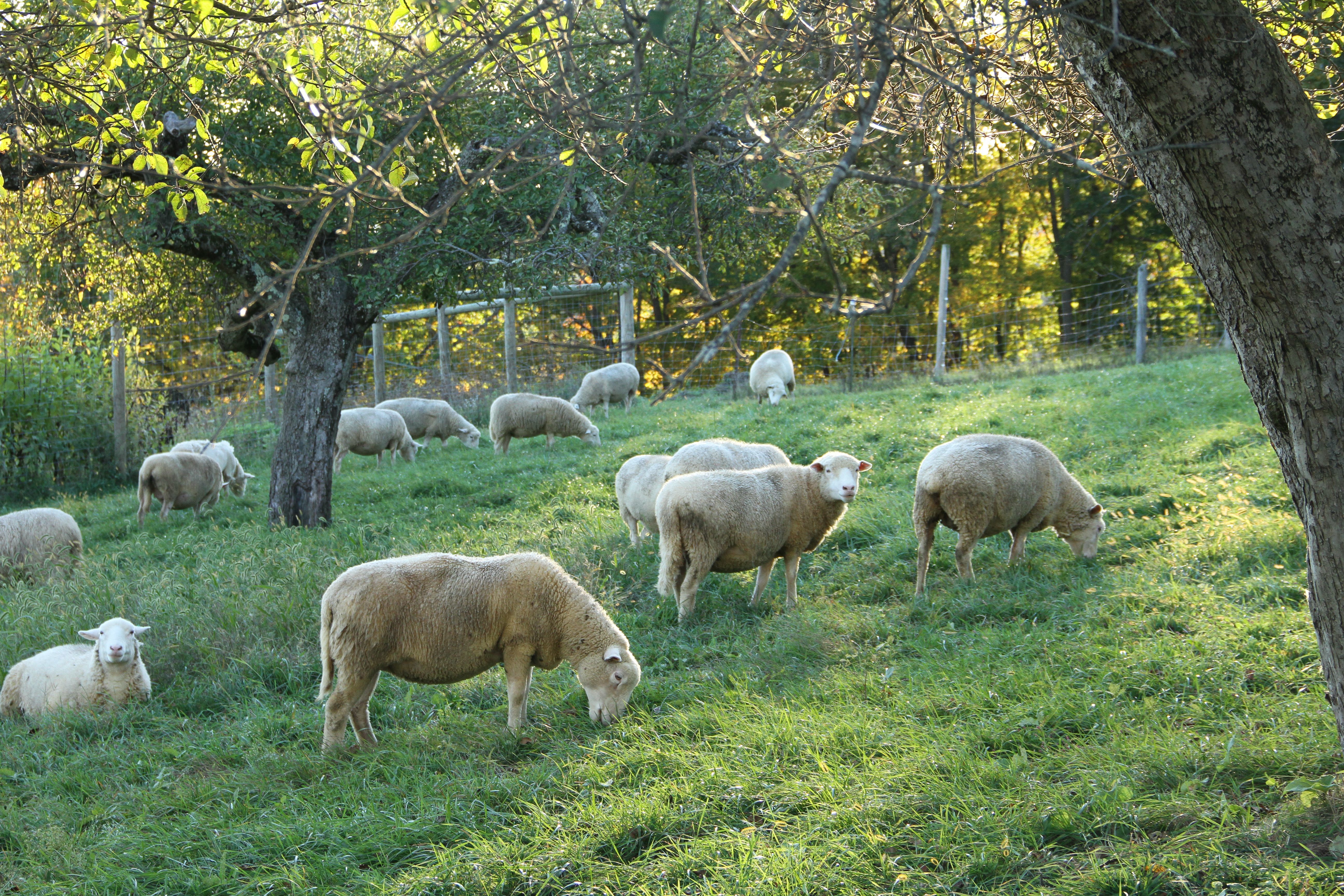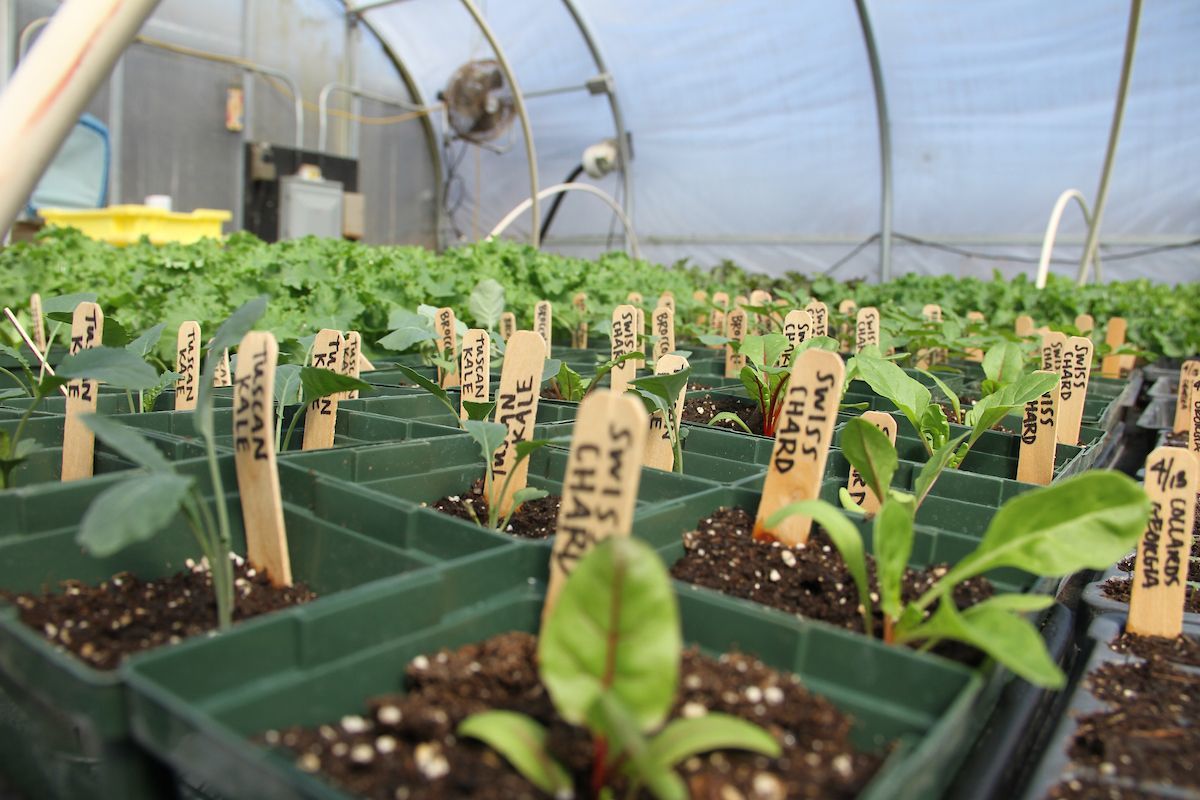
The land at Glynwood has diverse and complex ecosystems, topography and history that invite creativity and thoughtfulness when honing best management practices. As a farmer with training in forestry, I continuously think about land use and management through the lens of agriculture and silviculture.
Silvopasture is a management method utilizing the ecological concept of disturbance regime within forest-gap dynamics. Practiced for millennia, silvopasture is the intentional integration of managed forest and grazing systems. Before European colonialism, land occupation, and genocide, the indigenous people of the eastern forests intentionally created small and large gaps in the forest–strategic openings creating space to grow food and encourage wild game to browse, forage and graze. European colonial occupiers practiced techniques of domesticated animal husbandry, orcharding, and coppicing that incorporated European traditional forms of silvopasture in North America and in the Hudson River Valley in particular. These practices are still used today and though there is renewed interest among many farmers, they are not widespread in our modern farming and food system. Silvopasture is a tool with the potential to help answer questions about how we can produce food and other goods in a resilient system as we face increasingly dire climate change implications.
There are two general approaches to silvopasture that result in appropriate tree density, allowing enough light to reach the ground in support of herbaceous or woody forage growth. Both require intention and active management to create lasting grazing conditions for livestock. The first is to plant/establish trees within an open pasture, with careful thought given to tree species selection and spacing. The second is to thin an existing forest or dense shrubland by removing trees and woody shrubs to allow establishment of forage for livestock. If considering the second method, it is important to understand the forest’s phase of succession to determine if silvopasture is appropriate. Livestock can be a powerful management tool to change and direct young forest development, but damaging to intact mature and healthy ecosystems.
In both approaches to developing silvopasture—planting or thinning—the desired result is tree groupings to offer shelter, shade, browse fodder, or habitat for livestock and wildlife. The best approach for a particular context depends on the land managers’ objectives, existing ecosystems and current and historical land use. Timber and non-timber forest products (such as mushroom, tree nut, and ginseng production) can also be integrated into the overall system to generate added value. Silvopasture spaces are managed with short periods of impact with long recovery times (as with other rotational pasture systems) to ensure long-term and sustainable grazing. Specific silvopasture goals are unique to each land manager, landscape, and area of interest within that landscape. It is usually necessary to invest significant capital, time, and/or labor to reach a developed silvopasture system that pays off.
Glynwood’s land managers are thinking about how to best apply silvopasture techniques to the land at the farm, considering the three main land cover types here: pasture, upland forest, and shrubland. There are over 75 acres of prime pasture—open stands of forage that livestock rotationally graze. The discontiguous upland forest (excluding riparian zones and wetland forest) comprises about 60 acres. These woodlands vary in composition, density and structure. Some areas are in a young early succession phase of stand initiation with 30% crown closure (when you look up you can see lots of sky). Other forested areas are relatively mature and even-aged (80 years) stands in a steady state phase with near 100% crown closure (you can barely see any sky through the leaf canopy). The shrubland is rocky and wet with surface runoff, covering over 20 acres. The shrubland is dominated by introduced (aka invasive) species, especially multi-flora rose, barberry, and bittersweet and generally serves as large hedgerow swaths between open pastures. There are notable groupings of immature native trees within the shrubland including willow, red maple, black cherry, pin cherry, white ash, and eastern red cedar.
With these three land cover types in mind, there is a tremendous opportunity for silvopasture at Glynwood with great potential to benefit the land and the livestock alike. Although we rotate sheep, cattle, and pigs through pasture, woodland, and shrubland across the farm, it is not part of a specific silvopasture plan. We are actively working to incorporate silvopasture concepts and intentional practice into our overall farm and landscape plan in the coming months and years.
Concepts important to silvopasture:
Silviculture – the methods for establishing and maintaining healthy communities of trees and other vegetation that people deem important…ensures the long-term continuity of essential ecologic functions and the health and productivity of managed forest systems (Nyland).
Pasture – established growth of targeted forage species (grasses, forbs, herbaceous legumes) for grazing animals. This requires sufficient sunlight to reach the ground.
Forest stand – a subdivision of a forest composed of communities or groups of trees that grow together at a particular place and that [people] can effectively manage as a unit; and these communities or groups of trees have some unique vegetal characteristic that landowners can maintain by a particular series of treatments (Nyland). Age composition, species composition, and vegetative structure are factors that inform how to delineate stands.
Forest regeneration – a forest’s ability to grow another generation of trees from the current stock (Gabriel). This relies on a natural seed source.
Forest resilience – a forest’s ability to regenerate quickly after a disturbance (Gabriel).
Forestation - establish forest growth on areas that either had supported a forest or lacked it (Nyland) by natural regeneration or planting.
Reforestation – reestablish forest cover on areas where it once occurred, even if missing for several years.
Afforestation – introduce trees to sites that never supported forests, or no forest cover for a long period of time (e.g., at least 50 years).
Unlinked references:
Chedzoy, Brett and Peter Smallidge. Cornell Cooperative Extension. (2011). Silvopasturing in the Northeast. https://cpb-us-e1.wpmucdn.com/blogs.cornell.edu/dist/d/5957/files/2015/11/Silvopasturing3-3-2011-17ubctl.pdf
Gabriel, Steve and Ken Mudge. (2014). Farming the Woods. White River Junction, VT: Chelsea Green Publishing.
Nyland, Ralph D. (2016). Silviculture:concepts and applications (3rd ed.). Long Grove, IL: Waveland Press.

